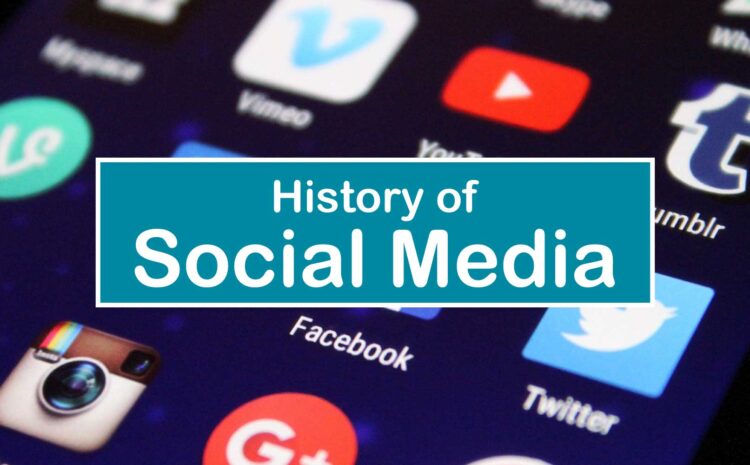Hello! Welcome to another “History of” post, where we dive into the history of something related to the tech industry and educate you on where it came from and how it got to where it is today. We certainly hope you’re enjoying these posts, and if you haven’t seen the previous ones, that you hop on over to our blog and check them out. We’ve written about several topics, including JavaScript and Cybersecurity. There’s always something interesting to learn. Without further ado, we present the History of: Artificial Intelligence.
Artificial Intelligence (AI) is everywhere, from healthcare to politics, and even in the private sector, but considering AI to be a solely modern phenomenon would be a misguided notion. The following are significant landmarks in AI history that outline the path from AI generation to its current progress.
Artificial intelligence (AI) is a buzz word in the IT world. According to PWC, AI has the potential to boost the world economy by $15.7 trillion by 2035. China and the United States stand to gain the most from the impending AI boom.
What is Artificial Intelligence?
Artificial intelligence is described as a machine’s capacity to do jobs and activities normally performed by humans. It is carried out by studying the patterns of the human brain and evaluating the cognitive process. Artificial intelligence organizes and collects massive amounts of data in order to generate relevant insights.
How did it all start?
In the 1930s and 1940s, colleges, industries, and government research agencies invested heavily in developing specialized equipment, including computer software. The supply chain had relatively little expertise in computer operations, and the corporation or organization that produced the computers were frequently the ones who paid for the development.
In the 1950s, Arthur Samuel built a series of programs that played checkers, and he eventually built one that could learn quickly and play better than its creator. William Newell and Simon came up with the General Problem Solver program, which imitated human problem-solving protocols. Herbert Gelernter invented the Geometry Theorem Prover at IBM in 1959, which was capable of proving geometrical theorems.
Dartmouth workshop on artificial intelligence is widely cited as the forerunner of today’s AI advances. The earliest kind of AI, leading to the Turing Test and beyond, was born, as was a fundamental tool in current AI research: heuristics and biases. Process-based models of reasoning, devised by several researchers, helped give rise to the first general-purpose computer algorithms for managing everything from hospital care to video game design.
Many scientists, programmers, logicians, and theorists contributed to the present understanding of artificial intelligence as a whole from the 1950s onwards. Each decade brought fresh discoveries and breakthroughs that shifted people’s perceptions of AI. AI has progressed from an unreachable vision to a genuine reality for present and future generations as a result of these historical achievements.
Success Era of AI
During the period between 1950-1974, when AI was in its infancy, a great deal of pioneering research was carried out. AI was rekindled in the 1980s by two factors: an extension of the algorithmic toolset and an increase in funding. These accomplishments, along with advocacy of leading researchers, convinced government agencies to fund AI research at several institutions. Following that, academics put large sums of money into AI research, which continued to gain traction.
The period between 1974 and 1980 has become known as “The First AI Winter” when AI research had its funding cut. The focus of AI research was suddenly based on accumulating knowledge from various experts. This led to the development of “Expert Systems,” which were developed and adopted by large corporations.
The AI field experienced another major slowdown from 1987 to 1993. This second slowdown coincided with XCON and other early Expert System computers. Expert systems were difficult to update and lacked the ability to “learn.” These were the same problems desktop computers had. In the late 1980s, funding for AI research was drastically reduced, resulting in “The Second AI Winter.”
In the 1970s and 80s, a wave of computers were developed that could think abstractly. Despite a dearth of government funding and public attention at the time, artificial intelligence thrived. In the 1990s, AI research fired back up with an expansion of funds and algorithmic tools. Deep learning techniques allowed the computer to learn from the user’s experience.
Artificial intelligence research turned its attention to intelligence agents in the early 1990s. They have grown into digital virtual assistants and chatbots as a result of the utilization of Big Data programs. NLP is developed using machine learning, which is a branch of artificial intelligence. It has evolved into its own business, providing duties such as phone answering.
Digital virtual assistants recognize spoken orders and respond by accomplishing tasks. Chatbots are meant to conduct human-like discussions with consumers and are frequently employed in marketing, sales, and customer support. There are several virtual digital assistants on the market today, including Apple’s Siri, Amazon’s Alexa, Google Assistant, and Microsoft’s Cortana.
Present AI
We’re all aware of the current circumstances and the importance of AI in our life. AI collects and organizes enormous volumes of data to draw inferences and estimates that are beyond the human capacity for manual processing. Amazing, right? The chance of mistakes and irregular patterns is lowered as the efficiency increases.
Future of AI
Artificial Intelligence (AI) is poised to become a key component of a variety of future technologies such as big data, robots, and the Internet of Things (IoT). It’s risky, but it’s also an incredible opportunity. New cyberattack methods will be developed to exploit specific AI flaws, but companies are also preparing for that.
Over the previous five years, global AI research has risen at a rate of 12.9 percent each year. China is predicted to become the biggest global source of Artificial Intelligence within the next five years. Europe will be on the number one spot in terms of AI research output after the US. We’re excited to see what researchers in this subject come up with in the future. Whether it’s Artificial Intelligence or Superintelligence—will AI take over?

 Linkedin
Linkedin


